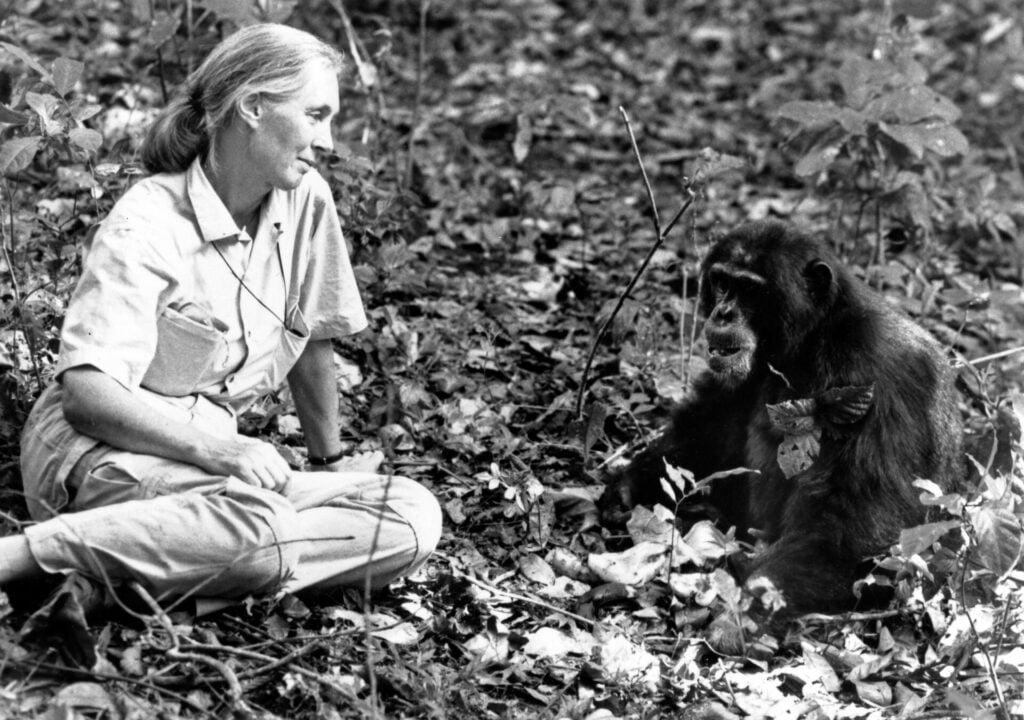This year marks the 130th anniversary since Rudyard Kipling’s timeless children’s tale, The Jungle Book was first published. Featuring a fictional, fearsome Bengal tiger known as Shere Khan, the story is set in the mystical depths of a jungle inspired by India’s real-life Seoni forests. Located in the central state of Madhya Pradesh and now called Pench Tiger Reserve, it’s home to 50 of the country’s 3,167-strong tiger population.
It’s an impressive number when you consider that less than 4,500 Bengal tigers exist in all of Asia, where subspecies including the Caspian, Javan and Bali Tiger have sadly succumbed to extinction. The World Wildlife Fund (WWF) estimates that since the beginning of the last century, through poaching, poisoning, hunting and deforestation, we’ve wiped out 97 per cent of the planet’s largest species of cat.

So how has the most densely populated nation on earth (as of 2024) managed to support the world’s largest tiger range and become a global leader in tiger conservation? ‘India has over 70 per cent of the planet’s wild tigers,’ Anish Andheira President of Indian not-for-profit Wildlife Conservation Trust (WCT) tells The Ethicalist. ‘Tigers and other large mammals are indicators of the health of natural ecosystems.’
The importance of these top predators cannot be understated. By keeping prey populations in check, tigers maintain a balanced food web, while indirectly helping other wildlife.
The World Wildlife Fund estimates that since the beginning of the last century, through poaching, poisoning, hunting and deforestation, we’ve wiped out 97 per cent of the planet’s largest species of cat
Safeguarding these striped Big Cats – India’s Tiger Kings – supports scores of other endangered species like barasingha (swamp deer) and lion-tailed macaque, which also share their Indian forest home. Only recently it’s been discovered that tigers can mitigate climate change too, with a study published by Nature Ecology and Evolution confirming that Bengal tiger conservation has helped save one million tonnes of carbon emissions between 2007 and 2020 by keeping some 6,000 hectares of forest still standing.
Return of the Roar

Staring extinction in the face in the 1960s, these Bengal beauties lifeline was Project Tiger, which marked its milestone 50th anniversary in 2023.
Renamed the National Tiger Conservation Authority (NTCA), the country’s flagship conservation programme has been credited with not only rescuing India’s tigers from the point of no return, but boosting their population two-fold.
These solitary species now silently stalk the forests in 54 dedicated reserves across 18 Indian states. ‘Several reserves have done exceedingly well in safeguarding tigers,’ Andheria says while reeling off Pench, Satpura (also situated in Madya Pradesh state), Corbett (located in the Himalayan north) Kaziranga (northeast India’s Assam state) and Bandipur (in the southern Indian state of Karnataka), among others.‘[These reserves] provide the recipe for successful large carnivore conservation to the rest of the world.’

But the remarkable rebound of these skilled ambush hunters hasn’t been without a plot twist, or two. In 2008 their numbers plummeted to an all-time low of 1,400 according to the Wildlife Institute of India, their dramatic decline attributed to habitat destruction and poaching.
Everything from a Bengal tiger’s tail – used to treat skin diseases – to its razor-sharp whiskers, which are believed to cure toothache, can be prized parts for an illegal trade that’s largely driven by the demand for traditional medicine in some Asian cultures.
While this keystone species may have enjoyed a steady rise in numbers since, what India’s growing and growling tiger population (which increased by 200 from 2018 to 2022 according the National Tiger Conservation Authority,) disregards, are cases of localised extinctions. ‘There are several tiger reserves [like India’s eastern states of Palamau and Namdapha] that have hardly any or no tigers left,’ Andheria says. He blames the over-exploitation of wild prey, inadequate protections and Shere Khan’s single fear: (human-induced) forest fires.
A Flattened Forest Home
With a male Bengal tiger’s territory covering up to 100 square miles, these big cats need space, and lots of it, to roam. But rampant reservoir building, railway construction and deforestation as a result of urbanisation and commercial mining is piling pressure on their precious habitat.
While the rest of the world is busy phasing out fossil fuels, India’s in the midst of a coal rush that means plundering its central region’s resource-rich tiger territory. Iron, copper (that’s mined, paradoxically, for renewable energy infrastructure) and manganese metals (used in the steel industry) as well as limestone and kyanite gemstones are also buried treasure.
It’s only recently been discovered that tigers can mitigate climate change with a study confirming that Bengal tiger conservation has helped save one million tonnes of carbon emissions between 2007 and 2020 by keeping some 6,000 hectares of forest still standing
Most controversial are the six mines proposed for Tadoba National Park, which, if given the green light, would imperil an important Bengal tiger breeding zone and carve up key tiger corridors. Essential for population connectivity, more than often, these wildlife highways aren’t in protected areas in India.
The fragmentation of the country’s fragile forests only exacerbates human-tiger conflict; one of the leading causes of tiger attacks, which claimed 112 lives in 2022 according to India’s Ministry of Environment, Forest and Climate Change. A conflict with casualties on both sides, retaliatory killing of Bengal tigers by villagers for stalking, or worse, killing their cattle, is particularly prevalent in India’s second-most populous state of Maharashtra.
Water Bearers
‘Contrary to popular belief outside of India, tiger conservation is as much about people as it is about tigers,’ Andheria says. ‘The majority of Indians, even today, are directly dependent on natural ecosystems and monsoon for their daily subsistence.’
‘Almost all of India’s 54 tiger reserves act as catchment for huge lakes that supply water to important towns and irrigate vast stretches of agricultural land. Research has shown that as many as 600 rivers either originate from or are fed by tiger-bearing forests. The charisma of arguably the most adored large cat on earth has merely been used to secure several important river basins of India.’
The main takeaway? By tearing down trees, which naturally soak up rain through their roots during the monsoon and release it during drier periods, you don’t just rob these apex predators of their home, but Indians’ life-giving water supply, too.
Tribal Tensions

The lengths India has gone to in order to protect its national animal and the wilderness it inhabits haven’t been without controversy. According to the National Tiger Conservation Authority (NTCA), 50 Indian tiger reserves have displaced a total of 56,247 families from 751 villages since Project Tiger was launched in 1973. Many are Adivasis (central and eastern India’s indigenous peoples), who comprise roughly one tenth of the country’s population.
Declared a tiger reserve in 1999, Nagarahole National Park’s Jenu Kuruba, Betta Kuruba and Yerava Adivasi communities have been impacted the most. Traditionally honey harvesters, who rely on forest hives to make a living, an estimated 20,000 Jenu Kuruba have been uprooted from their sacred ancestral land to create critical tiger habitats. What makes Nagarahole so unique and important to these big cats is its role as a life-nurturing wildlife corridor between India’s Western and Eastern Ghat mountain ranges.
The debate rages on as to whether this is voluntary relocation or forceful resettlement. While some call it a form of ‘fortress conservation’, which demands that protected areas be free from humans to maintain their biodiversity, wildlife experts like Anish Andheria are quick to point out the silver lining.
‘India’s Government runs a fairly transparent “voluntary” relocation programme for communities who want to willingly move out of some of the remotest and extremely inhospitable habitats of India for better access to health, education and livelihood opportunities,’ he says. ‘The coexistence of large carnivores (tigers, bears and wild dogs) and people is not an easy proposition.’
Cultivating a Peaceful Coexistence
In the country’s remote northern reaches, The Zoological Society of London (ZSL) has taken a wildly different approach to tiger conservation, one that puts indigenous communities front and centre.

Resting in the shadow of the Himalayas, the Terai Arc Landscape (TAL) is home to around 880 transboundary tigers, who move freely between southernmost Nepal and three states in Northern India. ‘During the early 1970s, there was a buffer between the forest and agricultural areas, and wild animals came into buffer areas and returned to the forests [in Terai],’ ZSL’s Conservation Project Manager Dr Harish Guleria tells The Ethicalist. He goes on to explain how human activity is slowly swallowing up this buffer, bringing Bengal tigers into closer and closer contact with humans.
Recognising that the best people placed to protect the forest and its native wildlife are those who live here, ZLS – in collaboration with partners such as the Uttarakhand Forest Department and Nandhaur Wildlife Sanctuary – set about ‘involving indigenous communities as crucial stakeholders in Bengal tiger conservation efforts,’ says Guleria. ‘Local community members are trained as watchers and equipped to work alongside forest frontline staff to prevent poaching and forest fires, monitor wildlife movement and report any illegal activities. When tigers prey on livestock, affected community members are compensated for their losses.’
It goes without saying that avoiding human-tiger conflict to begin with, is the ultimate goal. To that end, ZSL has turned to green tech like solar fencing and community-based hybrid solar-and-wind-powered guard posts (known locally as chowkis) in Terai’s Nandhaur Wildlife Sanctuary, that’s sandwiched between the Gola and Sharda rivers.
Bengal Tiger Triumph
In a huge conservation win, the 170 square mile sanctuary’s tiger numbers have trebled over an eight-year period. It’s a finding made possible by community-deployed and operated camera traps ‘which play an essential role in regularly monitoring [and verifying] tiger and prey populations in Nandaur,’ Guleria says.
Perhaps Nagarahole Tiger Reserve could learn from the example set by Terai, which has proven that engaging and empowering locals can be a win-win for both big cat and human. ‘The success of tiger conservation in India cannot be attributed to government-driven enforcement alone,’ argues Andheria, adding, ‘a deep-rooted wildlife-friendly culture and social acceptance of large carnivores are equally responsible for the sustenance of potentially dangerous wild animals. History has shown that tigers only do well if people are willing to accommodate them.’ And that means not fearing but flying the flag for the Shere Khans’ of India’s fragile jungles.









